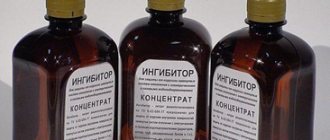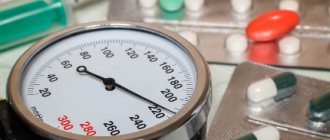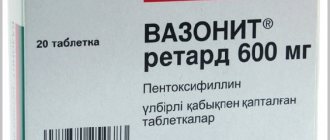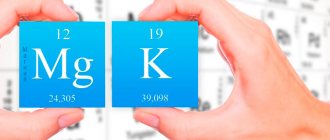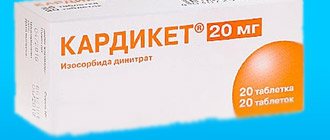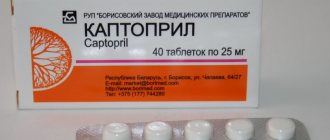DIURETICS (CLASS S 5)[edit | edit code]
According to the 2008 List of Prohibited Substances and Methods, masking agents include various types of diuretics.
Diuretics in the List of Prohibited Substances and Methods (2008) are represented by the drugs acetazolamide, amiloride, bumetanide, canrenone, chlorthalidone, ethacrynic acid, furosemide, indapamide, metolazone, spironolactone, thiazides (for example, bendroflumethiazide, chlorothiazide, hydrochlorothiazide), triamterene, and other substances with a similar chemical structure or similar biological effects (with the exception of drosperinone, which is not prohibited). With regard to diuretics, it is noted that the permit for their therapeutic use is not valid if the athlete’s urine, in addition to the diuretic, contains another prohibited substance in a threshold or subthreshold concentration.
Diuretics (diuretics)
- medicines of different chemical structures that help increase the formation and excretion of urine. Due to the fact that in the mechanism of the diuretic action of most drugs the main role is played by increasing the excretion of salts from the body, drugs in this group are also called saluretics (Latin sal - salt).
Historical background[edit | edit code]
The history of diuretics is quite interesting. Edema has attracted attention since ancient times. Throughout the existence of medicine, intensive searches have been carried out for organic and inorganic substances, which today we classify as diuretics. These searches were unsuccessful, and by the beginning of the 20th century. medicine had in its arsenal very weak drugs - calomel, sea onion, etc. Later, ineffective drugs (close to caffeine) were also used. Only in 1919-1920. By chance, due to a medical error, the diuretic effect of mercury compounds used in the treatment of syphilis was discovered. These were the first highly active diuretics, but they had significant toxicity. Now diuretic mercury drugs are not used, but their study played a huge role in the development of modern ideas about the diuretic and extrarenal mechanisms of action of diuretics. Thanks to these data, since the 1960s, dozens of groups of diuretics with different mechanisms of action have been created, used in practical work, and designed according to predetermined properties in an unusually short time.
Amiloride was isolated in 1966 as a result of exploratory screening for antikaliuretic activity of 25 thousand purposefully synthesized compounds. The creation of thiazides and other modern diuretics is associated with observations in which it was discovered that patients receiving sulfonamides developed metabolic acidosis with alkalinization of urine. It has been established that these drugs cause diuresis with the release of sodium bicarbonate. Understanding the possible benefit of this diuretic effect led to the development of acetazolamide and later the thiazides.
When acetazolamide's competitor, dichlorphenamide, was synthesized, it was found to increase sodium chloride excretion to a greater extent relative to sodium bicarbonate excretion. This change appeared to be desirable, indicating a mechanism of action other than carbonic anhydrase inhibition. Further modifications of the molecule led to the creation of disulfamoylchloroaniline, although a weak diuretic, but which served as the basis for the synthesis of the cyclic compound chlorothiazide (the first thiazide). This compound had little effect on carbonic anhydrase activity, but selectively inhibited the reabsorption of sodium chloride in the distal tubules. Loop diuretics were subsequently created based on thiazides.
It should be noted that scientists of the former USSR - physiologists, pharmacologists and clinicians E. B. Berkhin, A. V. Vinogradov, A. G. Ginetsinsky, G. A. Glezer, O. M. Eliseev, A. A. Lebedev, A. K. Merzon, Yu. V. Natochin, M. Ya. Ratner, B. A. Sidorenko, E. M. Tareev and others - made a significant contribution to the study of the mechanism of action of diuretics and the features of their use in various diseases.
Of all the diuretics in sports, furosemide is most often used, for the use of which in 1988, in particular, the Bulgarian weightlifters M. Grablev and A. Genchov were disqualified.
Contraindications and indications for use
Indications:
- Urinary tract diseases.
- Arterial hypertension.
- Renal dysfunction.
- Edema.
- Moist rales in the lungs.
- Rapid weight gain.
- Ascites.
- Hydrothorax.
- Endocrine diseases.
- Increased liver size.
Contraindications:
- Elevated uric acid levels.
- Diabetes.
- Tuberculosis.
- Diseases of the liver, kidneys.
- Pregnancy.
- Lactation period.
- Individual intolerance to components.
- Hepatitis.
- Thrombosis.
- Cancer.
Side effects:
- Dizziness.
- Weakness.
- Fainting.
- Dehydration.
- Nausea.
- Disorders of the gastrointestinal tract.
- Diarrhea.
- Decreased libido.
- Skin rashes.
- Increased blood cholesterol levels.
Mechanism of action of diuretics[edit | edit code]
The main thing in the mechanism of action of diuretics is their effect on the kidneys, the structural and functional unit - the nephron, on the processes that occur in it (glomerular filtration, tubular reabsorption, secretion).
To understand the mechanism of action of diuretics, let us briefly consider the process of urine formation. Each kidney contains about 1 million non-communicating nephron formations, consisting of a vascular glomerulus (glomerulus), glomerular capsule and tubules. In the renal glomerulus, plasma is filtered from the capillaries into the capsule cavity. The endothelium of the capillaries does not allow blood cells and proteins to pass through. The filtrate is called primary urine, which enters the kidney tubules from the glomerulus through the capsule. Filtration in the kidneys requires that the blood pressure in the glomerular capillaries exceed the oncotic pressure of the blood plasma. With a decrease in blood pressure, filtration in the glomeruli decreases; with an increase, on the contrary, it increases. The glomerular filtration rate depends not only on the blood supply to the kidneys, but also on the number of functioning nephrons.
Glomerular filtration in an adult averages 100 ml/min. During the day, 150-200 liters of fluid are filtered in the kidneys, and only 1.5-2 liters of urine are excreted, i.e. 99% of the primary urine is again absorbed (reabsorbed) in the tubules. The tubules are divided into proximal, which passes into the loop of the nephron (Henle) (V-shaped convoluted tube), and distal, through which urine passes from each nephron into the collecting ducts, and from them into the renal pelvis and through the ureters into the bladder.
The reabsorption process occurs throughout the nephron. In order to increase diuresis by 2 times, it is necessary to increase glomerular filtration by 2 times, which is practically impossible to do, or to reduce reabsorption by only 1%. Thus, urine formation can be significantly increased by reducing tubular reabsorption (Fig. 3.11). In addition to water, sodium, chlorine and potassium ions are reabsorbed in the tubules. It should be taken into account that in the tubules it is necessary to reduce the reabsorption of sodium ions, and water passively follows this osmotically active ion.
The effect of increasing filtration and decreasing reabsorption by 10% on the amount of diuresis
Sodium reabsorption in the kidney tubules occurs as follows. From the lumen of the tubule, Na+ enters the cell through the apical membrane. It is believed that sodium transport within the cell is carried out using a special carrier protein, the synthesis of which is regulated by aldosterone. Aldosterone binds to receptors in cells, is transferred to the nucleus and, influencing DNA, stimulates the synthesis of messenger RNA, which promotes the activation of the synthesis of the carrier protein in the ribosomes. Sodium, which entered the tubule cell, creates a fund (pool) of sodium, which is subsequently actively reabsorbed. Reabsorption is carried out using special pumps that are located on the basement membrane of the tubule wall cells. Several types of such pumps are known, one of them transports Na+ in exchange for K+. Others reabsorb Na+ together with SG or HCO~. This active transport of sodium is carried out due to the energy produced by mitochondria located near the basement membranes.
Reabsorption of sodium by epithelial cells of the renal tubular wall
About 70-80% of the total filtered Na+ is reabsorbed in the proximal tubules, followed by passive reabsorbment of water and SG. Carbonic anhydrase reabsorbs hydrogen carbonate (HCO3). The point of application of diuretics may be the proximal nephron, but their effect is insignificant, since a decrease in reabsorption in the proximal tubule entails a compensatory increase in it in the nephron loop and the distal tubule.
Active transport of Na+ and SG occurs in the nephron loop; its wall is impermeable to water. The action of diuretics primarily occurs in this part of the nephron; they are called loop diuretics. Blockade of sodium reabsorption in this department causes the greatest natriuresis.
Diagram of the nephron and localization of the action of diuretics (Farmakolopya, 2001): 1 - xanthines; 2 - diacarb; 3— mannitol; 4— furosemide, ethacrynic acid; 5 - dichlothiazide; 6— spirolactone, triamtren
Urine formation is completed in the distal nephron and collecting ducts. Transport processes here are controlled by hormonal influences. The sodium-retaining effect of the mineralocorticoid aldosterone and the water-retaining effect of the antidiuretic hormone (vasopressin) are manifested. Passive secretion of K+ from nephron cells occurs through the apical membrane along an electrochemical gradient. The distal tubule and collecting ducts can also be the point of application of diuretics (aldosterone antagonists, triamterene and others), but they are ineffective. Blocking Na+ reabsorption in this compartment, when about 90% of the filtered Na+ has already been reabsorbed, can increase its excretion by only 2-3% - the filtration charge. Sodium transport in the kidneys is also regulated by other factors. This is an atrial natriuretic hormone that is released from the atria when they are stretched, which causes an increase in glomerular filtration rate and inhibition of sodium reabsorption in the collecting ducts. In addition, there is natriuretic hormone - a low-molecular compound that enters the blood when volumoreceptors are stimulated and, like ouabain, blocks Na*, K+-ATPase in the kidneys, which reduces Na+ reabsorption. Substances that act as potential regulators of sodium excretion include estrogens, somatotropin, insulin (increase Na+ reabsorption), progesterone, parathyroidin, glucagon (reduce Na+ reabsorption). Factors that are formed in the kidneys (kinins, prostaglandins, dopamine, etc.) also act locally.
Considering the principles of functioning of the urinary system, it becomes clear that drugs that stimulate urination can directly affect the urinary function of the kidneys or change their hormonal regulation.
The use of diuretics, primarily as a means of symptomatic therapy aimed at reducing edema, also has an important pathogenetic effect on the complex chain of reactions in diseases that are accompanied by the retention of salts and water in the body.
There are more than 20 drugs in the arsenal of diuretics. Which of them should be preferred in a given situation should be helped by knowledge of pharmacokinetics, mechanism of action, possible side effects, and more.
Admission rules
Before taking diuretics, you should consult a specialist. The daily dosage of the drug for the treatment of diseases is prescribed by the doctor. When using diuretics for weight loss, you must follow a drinking regime. To avoid dehydration, you need to drink at least 2 liters of water daily. Maintain a proper and balanced diet. Avoid junk and fried foods, sugar, salt, and alcoholic beverages. Every 2-3 days, weigh yourself in the morning and control your weight. If you feel unwell and side effects occur, you should stop taking it.
Classification of diuretics[edit | edit code]
Today there is no perfect classification that would take into account all aspects of the action of diuretics. Diuretics, having different chemical structures, differ in localization, mechanism, strength of action, speed of onset of effect, its duration, and side effects. For a long time, the classification of diuretics was based on their chemical structure. Attempts have been made to classify diuretics according to the nature of their effect on the kidneys. However, many diuretics also have extrarenal effects. Attempts to classify diuretics according to their ability to influence one or another part of the nephron are also associated with difficulties. The diagram (Fig. 3.14) shows that some of these drugs (xanthines, furosemide, ethacrynic acid, osmotic diuretics, etc.) act throughout the nephron. Therefore, it is rational to classify diuretics based on their mechanism of action.
Points of action of diuretics at different levels of the nephron
Depending on pharmacodynamics, modern diuretics are divided into three groups: saluretics, potassium-sparing diuretics, osmotic diuretics.
Saluretics include thiazide derivatives (hydrochlorothiazide, cyclomethiazide), thiazide-like (clopamide, chlorthalidone), loop diuretics (furosemide, torasemide, ethacrynic acid, bumetanide), carbonic anhydrase inhibitors (diacarb).
Potassium-sparing diuretics include triamterene, amiloride and spironolactone, eplerenone, which increase sodium excretion and have a slight effect on potassium excretion.
Osmotic diuretics (mannitol, urea), increasing osmotic pressure in the tubules, prevent water reabsorption. However, it should be noted that this systematization does not include diuretics that affect blood circulation in the kidneys; it is not very focused on the mechanism of action of the drugs.
To better understand the action of modern diuretics, a classification of diuretics is recommended, which takes into account not only the mechanism, but also the localization of their action.
I. By localization and mechanism of action.
1. Agents acting at the level of renal tubular cells.
1.1. Agents acting at the level of the apical membrane.
1.1.1. Competing for the sodium transporter, or non-competitive aldosterone antagonists—triamterene, amiloride.
1.1.2. Competing aldosterone antagonists are spironolactone, eplerenone.
1.2. Agents acting at the level of the basement membrane.
1.2.1. Carbonic anhydrase inhibitors - diacarb.
1.2.2. Thiazide diuretics - hydrochlorothiazide, cyclomethiazide.
1.2.3. Thiazide-like diuretics - chlorthalidone, clopamide, indapamide.
1.2.4. Loop diuretics - furosemide, ethacrynic acid, bumetonide, torsemide.
2. Osmotically active diuretics - mannitol, urea.
3. Drugs that increase blood circulation in the kidneys - xanthines, aminophylline, aminophylline, etc.
4. Preparations of medicinal plants - horsetail, bearberry leaves, birch buds, orthosiphon leaves, lingonberry leaves, leaves and stems of Lespedesa capitata, torment leaves, strawberries, etc.
From a clinical point of view, strength, speed of onset and duration of action are of practical importance when choosing a drug. Therefore, diuretics are classified as follows.
II. By force of action.
1. Strong diuretics - furosemide (Lasix), torasemide (Trifas), ethacrynic acid (Uregit), clopamide (Brinaldix), osmodiuretics (mannitol, urea), etc.
2. Medium diuretics - thiazides: hydrochlorothiazide (hypothiazide, dichlothiazide), cyclomethiazide and thiazide-like - chlorthalidone (oxodoline, hygroton), etc.
3. Weak diuretics - spironolactone (veroshpiron, aldactone), diacarb (acetazolamide), triamterene (pterophen), amiloride, xanthines aminophylline (euphylline), medicinal plant preparations (bearberry leaves, orthosiphon leaves, birch buds, etc.).
III. According to the speed of onset of the diuretic effect.
1. Fast (emergency) action (30-40 min) - furosemide, torsemide, ethacrynic acid, mannitol, urea, triamterene.
2. Medium-acting (2-4 hours) - diacarb, aminophylline, amiloride, cyclomethiazide, clopamide, chlorthalidone, etc.
3. Slow action (2-4 days) - spironolactone, eplerenone.
IV. According to the duration of the diuretic effect.
1. Short-acting (4-8 hours) - furosemide, torsemide, ethacrynic acid, mannitol, urea, etc.
2. Medium duration (8-14 hours) - diacarb, triamterene, hydrochlorothiazide, clopamide, aminophylline, etc.
3. Long-term action (several days) - chlorthalidone, spironolacgon, eplerenone.
Diuretics acting at the level of renal tubular cells Drugs that disrupt sodium transport across the apical membrane of renal tubular cells include triamterene, amiloride, spironolactone, and eplerenone. They act at the level of the distal nephron. These are drugs that reduce the processes of physiological reabsorption of sodium and water.
Natural Diuretics
A natural diuretic diet is prescribed when there are contraindications to taking medications. People suffering from problems of the gastrointestinal tract, heart, and respiratory system. Experts include diuretic fruits, vegetables and herbs in weight loss diets.
Products with a diuretic effect:
- Watermelon.
- Cherry.
- Cranberry.
- Blueberry.
- Lemon.
- Melon.
- A pineapple.
- Pomegranate.
- Quince.
- Cabbage.
- Tomatoes.
- Beet.
- Onion.
- Carrot.
- Celery.
- Cucumber.
- Parsley dill.
- Ginger.
- Green tea.
- Nettle.
The products have a mild diuretic effect. Rich in vitamins, minerals and antioxidants. It must be consumed raw, prepared in juices and smoothies. During heat treatment, cooking and long-term storage, the energy value decreases.
Use of diuretics[edit | edit code]
Triamterene
(pterophen); chemical structure 2,4,7,-triamino-6-phenylpteridine is a derivative of pteridine, similar to folic acid.
Pharmacokinetics
. Well absorbed in the intestines. The effect occurs after 15-20 minutes and lasts 6-8 hours. The maximum concentration in the blood is determined after 1.5-2 hours. It is excreted by the kidneys. Intensively secreted in the proximal nephron. The half-life is 45-70 minutes.
Pharmacodynamics
. Due to the similarity of the triamterene molecule with the hydrated sodium ion, the drug interacts by the principle of competition with the carrier protein, which reduces the flow of sodium from the lumen of the tubule into the cell. A decrease in the intracellular sodium pool negatively affects its active transport through the basement membrane. Chlorine ions and uric acid are also removed.
A special feature of the drug is that it does not affect the excretion of potassium ions in the urine. At the same time, the concentration of potassium in the blood plasma does not decrease, which allows, if necessary, the use of triamterene together with cardiac glycosides. The drug reduces the excretion of magnesium and calcium. Triamterene does not affect acid-base balance. Its action does not depend on the content of aldosterone in the blood plasma.
The drug somewhat enhances the secretion of uric acid, certain disturbances in folic acid metabolism occur, which must be taken into account when prescribing the drug to pregnant women and young children.
Indications for use
: To prevent hyperkalemia, used with loop and thiazide diuretics. They produce the drugs triampur compositum and diuretidin, which contain triamterene and hydrochlorothiazide.
Side effects
: hyperkalemia, diarrhea, nausea, vomiting, headache, dizziness, azotemia, cramps in the lower extremities.
Klopamide
(britaldix); chemical structure of 4-chloro-N-(cis-2,6-dimethylpiperidino)-3-sulfamoylbenzamide. Refers to thiazide-like diuretics.
Pharmacokinetics
. Absorbed well. After absorption in the digestive canal, the effect occurs within 1-2-4 hours and lasts up to one day (18-20 hours). Excreted by the kidneys and intestines.
Pharmacodynamics
. Reduces the reabsorption of sodium and chlorine ions in the distal tubules, partially in the proximal ones, increases the excretion of potassium and magnesium.
Indications for use
: arterial hypertension as part of complex drugs (normatens, cristepin, normatisk), etc.
Side effects
: as with similar thiazide diuretics.
Indapamkd
(ariphon, indapres, lorvas) occupies a special place; chemical structure of 4-chloro-N-(2-methyl-1-indolinyl)-3-sulfamoylbenzamide.
Pharmacokinetics
. It is quickly and completely absorbed in the digestive canal, the maximum concentration is reached in the blood after 1-2 hours. About 70% of indapamide binds to blood plasma proteins. The drug is metabolized by the liver, excreted slowly, mainly by the kidneys, in the form of metabolites (about 70%), approximately 8% unchanged. Indapamide is also excreted in breast milk. The half-life is approximately 18 hours.
Pharmacodynamics
. The drug reduces sodium reabsorption in the cortical segment of the nephron, increases the elimination of sodium and chlorine, and has a lesser effect on the excretion of potassium and magnesium ions. The effect on the vascular wall is associated with the high lipophilicity of the drug. The antihypertensive effect is also explained by a decrease in the tone of smooth muscles of blood vessels due to changes in the transmembrane flow of calcium ions and a decrease in the sensitivity of the vascular wall. Stimulates the synthesis of substances with vasodilatory activity (prostaglandin E and prostacyclin 1a). A decrease in total peripheral vascular resistance and blood pressure was noted. Indapamide reduces left ventricular hypertrophy and does not affect the metabolism of lipids and carbohydrates.
Indications for use
: arterial hypertension.
Side effects
: hypokalemia, hyponatremia, orthostatic hypotension, rarely - leukopenia, thrombocytopenia, agranulocytosis, nausea, constipation, dry mouth, dizziness, asthenia, paresthesia, headache, possible hypersensitivity reactions (maculopapular rash, purpura, etc.).
Amiloride
(hypertas); chemical structure of N-amidino-3,5-diamino-6-chloropyrazinecarboxamide hydrochloride.
Pharmacokinetics
. When used internally, 50% of the drug is absorbed. The effect occurs after 2 hours and lasts 24 hours. The drug is not biotransformed and is excreted by the kidneys.
Pharmacodynamics
. In terms of diuretic action and clinical use, it is close to triamterene, but has an antihypertensive effect.
Indications for use
: as a potassium-sparing drug, it is used alone and in combination with other drugs. The drug moduletic contains amiloride and hydrochlorothiazide.
Side effects
: hyperkalemia, nausea, vomiting, headache.
Spironolactone
(veroshpiron, aldactone); chemical structure of y-lactone-3-(3-oxo-7a-thio-acetyl-17-hydroxy-4-androsten-17a-yl)propionic acid. As the name suggests, spironolactone is structurally similar to the mineralocorticoid aldosterone.
Pharmacokinetics
. Well absorbed in the intestines. The effect occurs after 2-3 days and lasts 2-4 days. It is rapidly metabolized in the liver, resulting in the formation of the active metabolite canrenone. It can accumulate with insufficient liver function, as well as in elderly people.
Pharmacodynamics
. Spironolactone, like triamterene, interferes with the reabsorption of sodium into the cell wall of the renal tubules. However, its mechanism of action is somewhat different. It prevents the interaction of aldosterone with nuclear chromatin, as a result of which the DNA-dependent synthesis of messenger RNA is blocked, which, having entered the ribosomes, would ensure the synthesis of the sodium transporter protein (permease). A decrease in sodium reabsorption contributes to its increased excretion from the body; also removes chlorine. In this regard, spironolactone is often called a competitive antagonist of aldosterone, since its action is due to the blockade of the action of this hormone. Taking into account this mechanism, the effect occurs only on the 2-5th day from the start of taking the drug. Like triamterene, spironolactone has virtually no effect on the excretion of potassium and magnesium from the body, and is effective against acidosis and alkalosis.
Indications for use
: arterial hypertension, chronic heart failure, liver cirrhosis with edematous-ascitic syndrome. The drug is most effective in cases of hyperaldosteronism (kidney tumors, chronic heart failure, etc.).
Side effects
: dizziness, drowsiness, skin rashes, hyperkalemia, gynecomastia.
Eplerenone
(inspra) has a specific effect, indications, and side effects similar to spironolactone. At the same time, eplerenone has a greater diuretic activity.
Source:
Types of diuretics
The main purpose of diuretics is to speed up urine excretion by the kidneys and slow down reabsorption. Different types of diuretics differ from each other in their mechanisms of action. Diuretics remove not only excess fluid from the body, but also important electrolytes. Such as: calcium, magnesium, sodium, potassium, chlorine. It is important to maintain a balance and not increase the established dosages on your own without consulting a specialist.
There are several groups of diuretic drugs:
1. Potassium-sparing.
They have a mild diuretic effect. They act by blocking sodium channels in the epithelium. Reduces potassium excretion by the kidneys. Used in combination with other drugs to stimulate the diuretic and hypotensive effects of thiazide and loop diuretics. Minimize potassium loss. Increase the excretion of sodium, water, salts.
2.Loop
They have a strong diuretic effect. Fast-acting diuretics come in the form of chemically different compounds. They contain a sulfonamide group in their structure. They act in the thick segment of the ascending loop of Henle, located in the kidney. They have a relaxing effect on the smooth muscles of blood vessels. Increases renal blood flow. Reduce the amount of intercellular fluid. Increases the excretion of sodium, chlorine, potassium, magnesium, and calcium from the body.
3. Taizidnye.
Contains sulfonamide derivatives of benzothiadiazine and non-thiazide sulfonamides. They block the transport of calcium and sodium in the distal convoluted tubules. Stimulates the synthesis of prostacyclin.
4. Osmodiuretics.
They have a specific mechanism of action. They delay the reabsorption of water. Does not affect potassium excretion.
